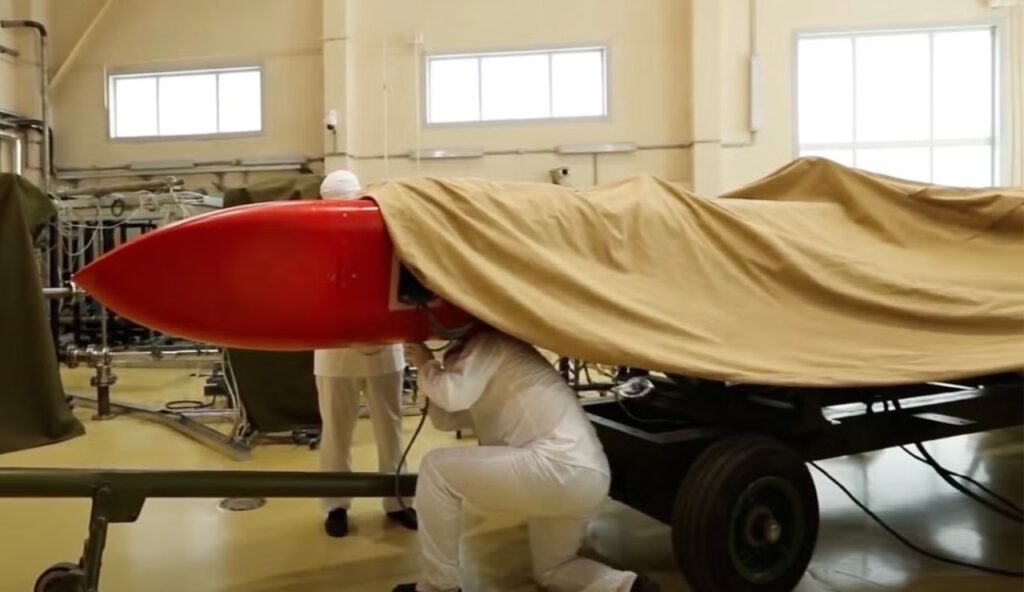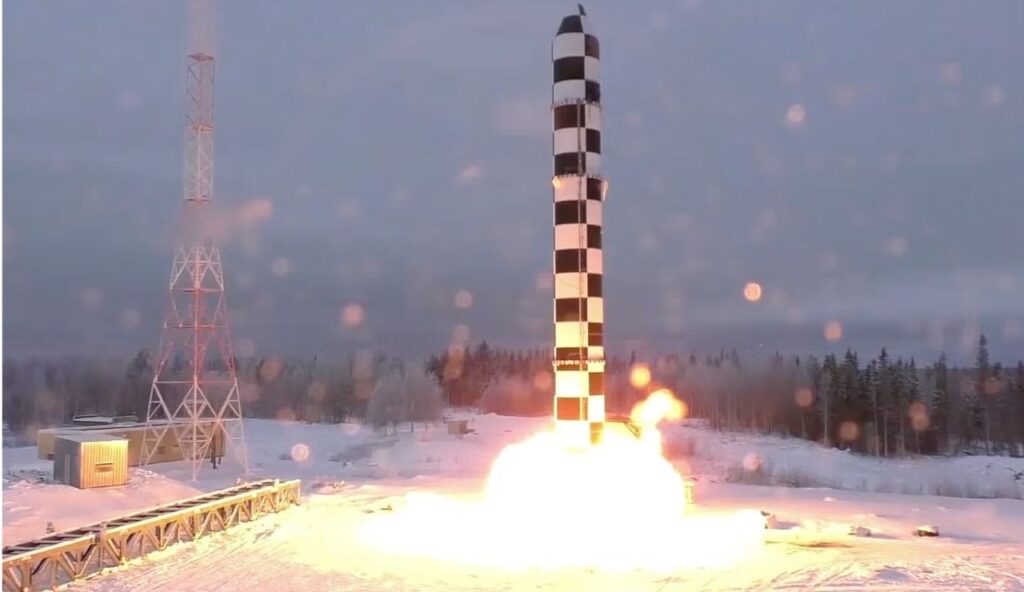Russia has conducted what it describes as a successful test of the Burevestnik, a nuclear-powered cruise missile that President Vladimir Putin claims can evade all existing defence systems. The announcement brings the controversial weapon closer to potential military deployment, though Western experts remain skeptical about its strategic value.
Record-Breaking Test Flight
Video footage released Sunday showed Putin, dressed in camouflage fatigues, meeting with senior military officials. General Valery Gerasimov, Russia’s chief of general staff, reported that the missile travelled 14,000 kilometers during a test conducted Tuesday, remaining airborne for 15 hours. Gerasimov emphasized that this duration represented only a fraction of the weapon’s capabilities.
Putin instructed military officials to complete final testing and prepare infrastructure for deploying the system to Russia’s armed forces. He asserted the missile’s invulnerability to current and future defences, citing its nearly unlimited range and unpredictable flight trajectory.

Understanding the Burevestnik
The 9M730 Burevestnik, named after the storm petrel seabird, represents a unique weapons system that NATO designates as SSC-X-9 Skyfall. First revealed by Putin in March 2018, this ground-launched cruise missile is both nuclear-capable and nuclear-powered, setting it apart from conventional weapons.
The missile’s nuclear propulsion system theoretically enables flight durations far exceeding traditional turbojet or turbofan engines, which are constrained by fuel capacity. According to the Nuclear Threat Initiative, the Burevestnik could potentially remain airborne for days, circling the globe at low altitude while carrying nuclear warheads. This extended loitering capability would allow it to avoid missile defences, navigate terrain, and strike targets at unpredictable times and locations.
The International Institute for Strategic Studies estimates the missile’s range at up to 20,000 kilometers, enabling deployment anywhere in Russia while maintaining strike capability against targets in the United States. Russian military sources indicate the missile operates at altitudes between 50 and 100 meters, significantly lower than conventional cruise missiles, making radar detection more challenging.
How It Works
Experts believe the Burevestnik uses a small solid-fuel rocket for initial launch, driving air into an engine containing a miniature nuclear reactor. The superheated, possibly radioactive air expelled from the system provides forward thrust, enabling sustained flight.
Controversy and Skepticism
Western analysts have questioned the weapon’s strategic necessity, arguing it adds little to Russia’s existing capabilities. Some experts note its subsonic speed makes it detectable, with vulnerability increasing during extended flights. Concerns also exist about potential radiation dispersal along its flight path.
However, Russian military expert Alexei Leonkov countered in 2019 that Burevestniks would serve a specific purpose: eliminating remaining enemy infrastructure after initial intercontinental ballistic missile strikes, when air-defence systems would be compromised or destroyed.

Troubled Development History
The Burevestnik’s development has been marked by failures and tragedy. In 2019, at least five Russian nuclear specialists died in an explosion during a White Sea experiment that U.S. intelligence sources linked to Burevestnik testing. Putin later presented their widows with state honours, praising their work on an unparalleled weapon system without naming it specifically.
Despite these setbacks, Putin announced a successful test in October 2023. U.S. researchers identified a probable deployment site in 2024 near the Vologda-20 nuclear warhead storage facility, located 475 kilometers north of Moscow.
Broader Context
The recent test coincides with heightened nuclear posturing. Wednesday saw Putin directing strategic nuclear forces drills involving Russia’s complete nuclear triad: intercontinental ballistic missiles launched from northwestern facilities and a Barents Sea submarine, plus Tu-95 strategic bombers firing long-range cruise missiles. These exercises occurred as a planned Putin-Trump summit on Ukraine was postponed.
A 2020 U.S. Air Force intelligence assessment acknowledged that successful deployment would provide Russia with a unique intercontinental-range capability, though questions about the system’s practical military utility persist.






